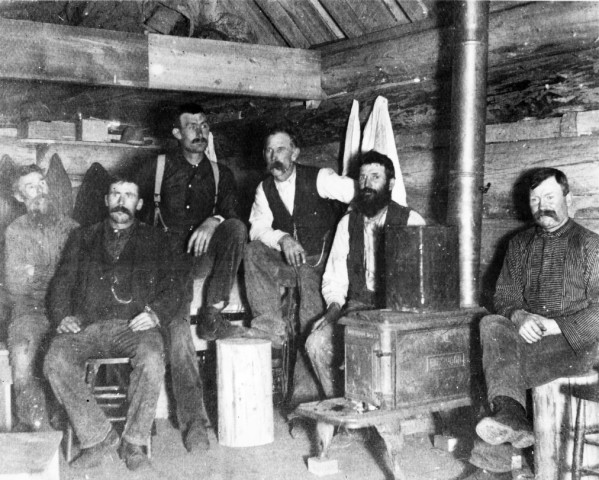The first European-Americans who arrived in the Boulder Valley in 1858 and settled in the Southern Arapahoe Indian wintering grounds did not come for the view of the Flatirons. Rather, they came in search of gold. It did not take them long to find both gold and silver in areas near Boulder Canyon such as Caribou, Eldora, Salina, and Gold Hill. By 1861, lacking any formal government, miners had set up several mining districts.
Who were these miners and where did they come from? Early arrivals of men came from across Americafarmers, clerks, and former soldiers, inexperienced but optimistic. They panned for gold or set up early placer mines, gleaning the heavy gold nuggets that settled from flowing streams or accumulated in alluvial deposits. Their ethnicities were varied, but most were of northern European ancestry.
From the Railroad to Mining
As mining progressed, it attracted homogeneous groups from specific countries. Chinese workers, brought to San Francisco to lay tracks for the Transcontinental Railroad, had to look for other employment when the road was completed. Some of these workers went to Central City and worked in the mines for 35 dollars per month. Eventually some struck out on their own, drifting to various streams in Boulder County to try their hand at placer mining. They were industrious, saved their money, and often found success. Chinese immigrants set up camps from Orodell to Sunset. A prominent camp was in Wall Street where they stayed until the late 1890s despite ethnic prejudice. Chinese workers were part of the influx of ethnic groups attracted to Colorado’s many types of mines.
When easily-retrieved gold became scarce, big money interests began hard-rock mining operations using heavy equipment and hard labor to tunnel directly into the mountains, searching for seams of ore-bearing deposits. Hard-rock mining required experienced miners, so the first skilled workers were recruited from Cornwall and Wales where skilled miners had been extracting minerals from hard rock since the Bronze Age.
From Scandinavia to Lyons
In the Lyons area, Scandinavian immigrants from Finland and Sweden labored in the sandstone quarries. Many came from the Upper Peninsula of Michigan when the copper mines failed, and some came directly from Finland. After John Gust Luokonen, a tanner, had a “disagreement with authorities” and had to leave his homeland, he came to Lyons and went to work in the quarries. He saved his money and brought over three sons who also saved their money and soon became important mine owners themselves. After 125 years, Loukonen Brothers Stone is still a family-owned business in Lyons. Their ethnic heritage is evident in quarry names like Helsinki, Soumi, and Kuipo.
Black Gold
In eastern Boulder County, a different kind of gold was discoveredcoal, also called black gold. As early as 1859, coal was being extracted near Marshall. Coal deposits in the Northern Coalfield ran underground in a wide swath from northwest Denver through Marshall, Louisville, Lafayette, and Erie. In 1880, 80 percent of coal miners were English-speakers from England, America, Scotland, Ireland and Nova Scotia. Thirty years later that percentage was reversed as Italians, Greeks, Croats, Russians and Poles arrived in coal mining towns of eastern Boulder County.
Mining remained the backbone of Boulder County’s economy for many decades. Boulder County’s mineral wealth was crucial to its development. For example, 100,000 dollars in gold was washed from the placer mines of Gold Run in the summer of 1859. During their existence from 1870 until 1955, over 25 million tons of coal came from the Louisville mines. These types of riches drew all kinds of people from near and far to Boulder County. The diversity of the miners has added vitality to Boulder County’s culture and has been essential to who we’ve become.

